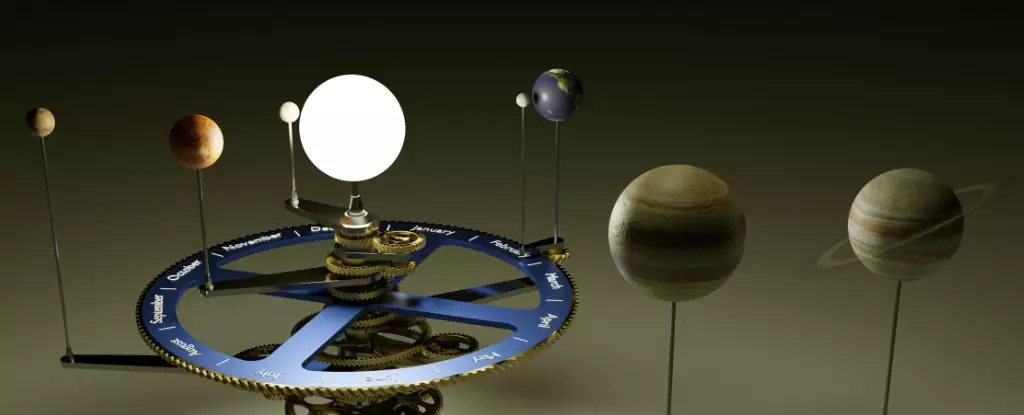As the Earth wends its way through the cosmos, celestial events continuously amaze and inspire those who take the time to look up at the night sky. Recently, an extraordinary opportunity for skywatchers has emerged: the long-anticipated appearance of all naked-eye planets at once is finally upon us. This enchanting spectacle is spearheaded by the elusive Mercury, which joins its planetary companions for a fleeting but delightful show. For enthusiasts and casual observers alike, the next several weeks promise an array of remarkable astronomical phenomena that are not to be missed.
Excitement escalated when Mercury, often hidden in the glow of the Sun, became visible again after its solar conjunction on February 9. Unlike other planets that readily capture attention, Mercury typically remains a challenging observer’s delight, but February offers a unique chance to track this swift planet down. Those wishing to catch a glimpse can rely on bright Venus as a guiding beacon in the sky. As Mercury moves past Saturn on February 25, its visibility improves, culminating with a remarkable celestial event on March 1 when the crescent Moon passes close to Mercury, obscuring it temporarily in regions like Hawaii and the Pacific.
The notable difficulty of spotting Mercury has historical precedence. Tales suggest that even renowned astronomer Nicolaus Copernicus struggled to observe it during his studies. However, this history only amplifies the thrill of finally adding Mercury to one’s astronomical “must-see” list. Observers should note that March 8 is a significant date as Mercury achieves its greatest elongation, appearing 18 degrees east of the Sun, a pristine sight for those equipped with telescopes.
Within this planetary pageantry, Venus follows closely behind Mercury, both planets racing towards an inferior conjunction in March. Their distinctive brilliance elevates any evening sky session, especially as the half-illuminated Moon graces the view on March 2, providing prime opportunities for anyone hoping to sight these celestial bodies during daylight. The historical context adds depth to this observation, with reports indicating that the attendees of President Lincoln’s second inauguration in 1865 were lucky enough to spot Venus in a bright midday sky, showcasing the planet’s undeniable visibility.
As the evenings progress, Mars takes center stage, illuminating the sky within the constellation of Gemini. Having recently reached opposition, Mars displays its rustic glow and provides a striking contrast to the surrounding celestial bodies. Scheduled encounters like the one with the waxing gibbous Moon on March 9 add to the pleasures of observing the night sky, capturing the imaginations of both amateur and seasoned stargazers.
Further afield, the grandeur of Jupiter commands attention, rising high in the constellation Taurus. Scheduled events such as the Moon’s meeting with Jupiter on March 6 allow observers to hone their skills in identifying this gas giant against the backdrop of night. The educational legacy behind Jupiter’s observations is profound; Danish astronomer Ole Rømer’s pivotal discoveries concerning its moons and the speed of light illustrate how patience in astronomical observation can lead to groundbreaking revelations, further fuelling the interest in this majestic planet.
While Jupiter dazzles, Saturn remains more elusive, lurking behind the western horizon. Its rings diminish in appearance as positioning angles shift, reflecting the complex dance of celestial bodies. For those willing to seek it out, binoculars can enhance the experience, allowing for identification of Saturn’s glowing presence just beyond Mercury.
Moving past the classical planets, those adventurous enough will also wish to probe deeper into the sky to locate the ice giants, Uranus and Neptune. While Uranus, shining at +5.8 magnitude, offers moderate viewing conditions within Taurus, Neptune poses a more significant challenge, often intertwined in the sky with Mercury and Saturn, calling for a dedicated effort. Yet, both planets hold remarkable historical significance, being the only ones discovered during the telescopic era, with Neptune’s existence uncovered through mathematical precision.
As March progresses, anticipate a transformative period in the sky. Saturn will recede from view while Mercury and Venus return to predawn skies. This celestial rhythm indicates the cyclical nature of planetary visibility, accentuated by upcoming dramatic eclipses on March 29, showcasing a partial solar eclipse, and a total lunar eclipse on March 14. Thus, skywatchers can expect not only a stunning planet showcase but also the chance to witness two unique phenomena in rapid succession, casting a spell over the cosmos.
The sky is alive with opportunities for exploration over the next few weeks. So prepare your telescopes, grab binoculars, and engage with the captivating narrative of our solar system. Enjoy the magical celestial dance above, each moment a gift that rekindles our connection to the universe. Clear skies and happy observing!


Leave a Reply